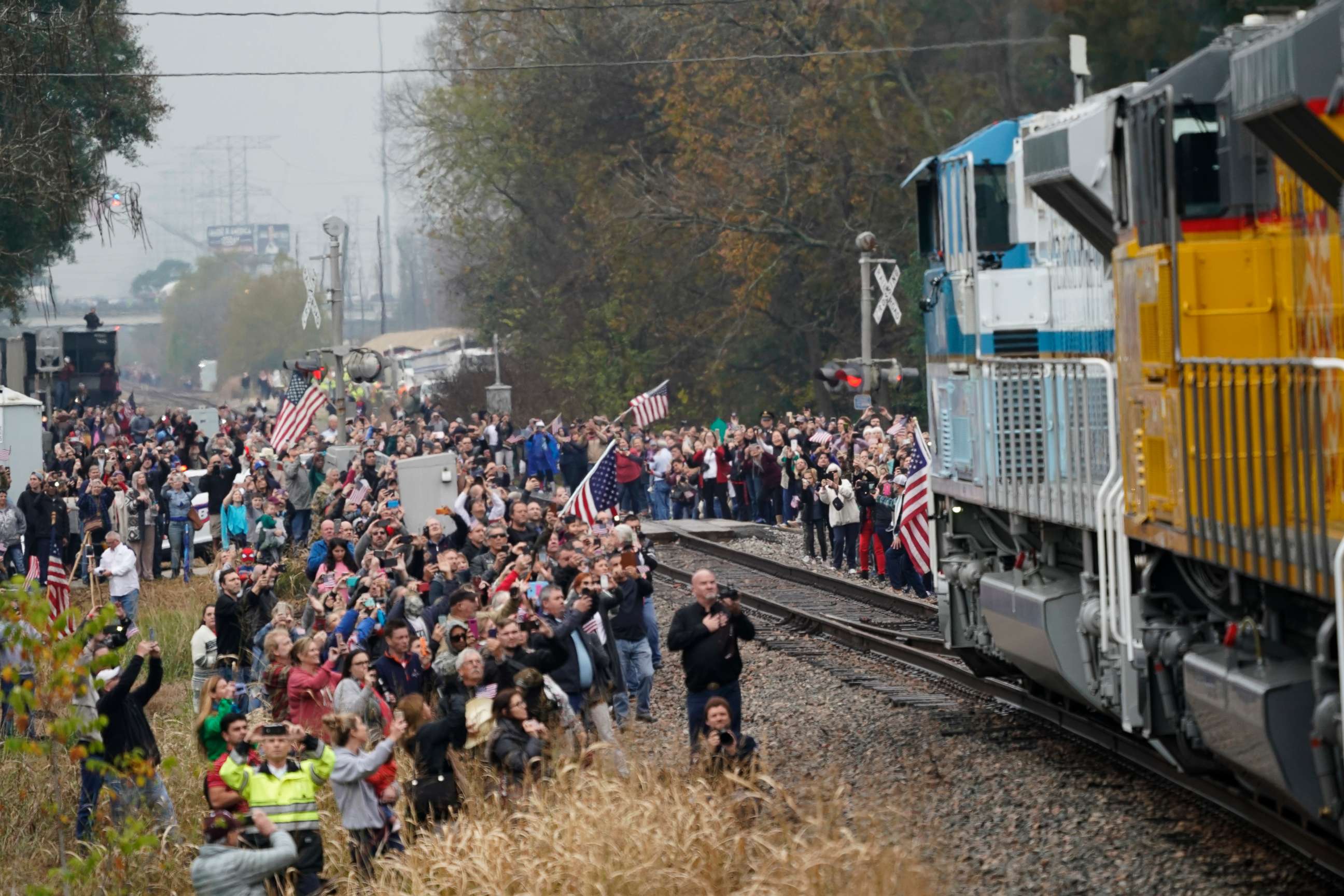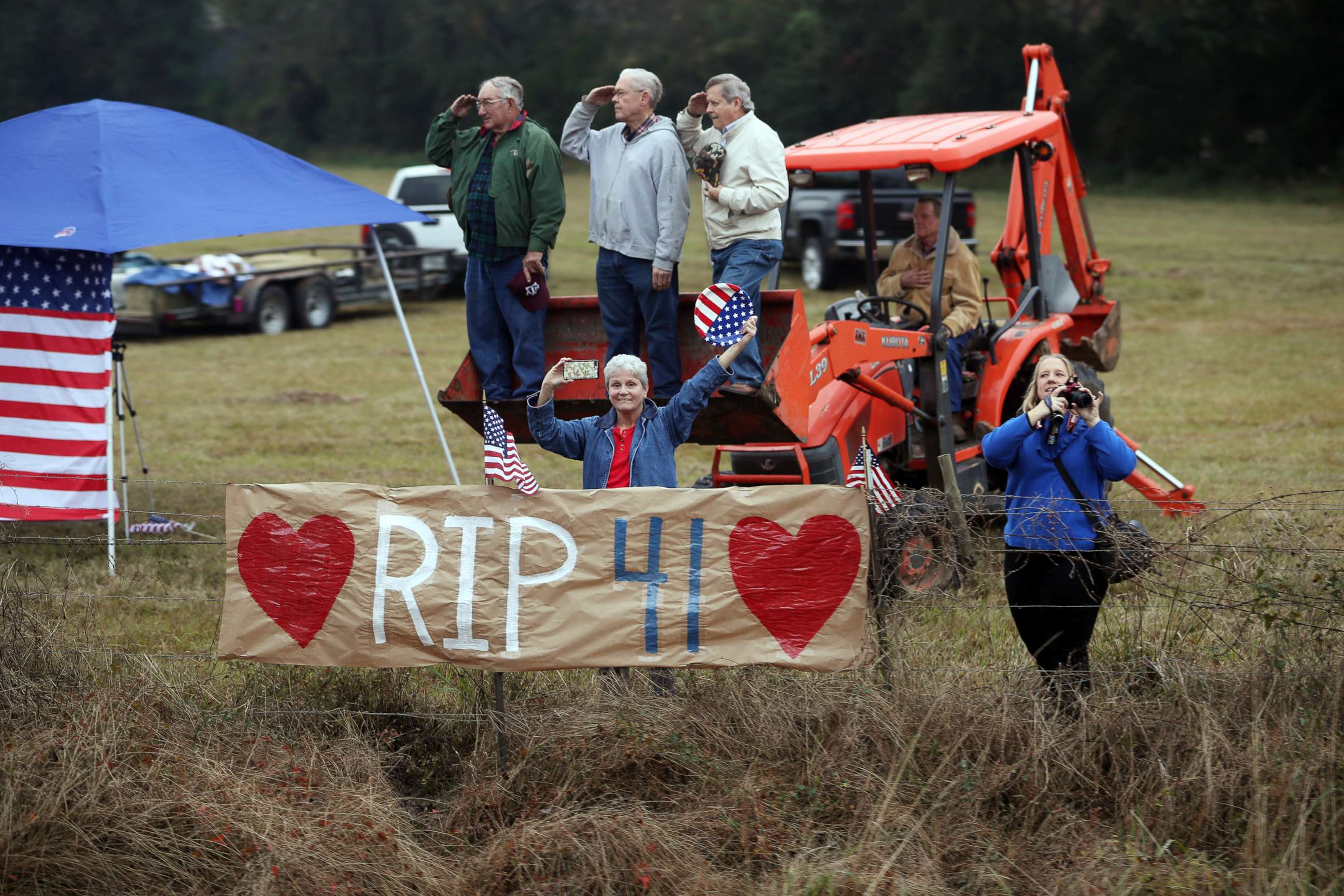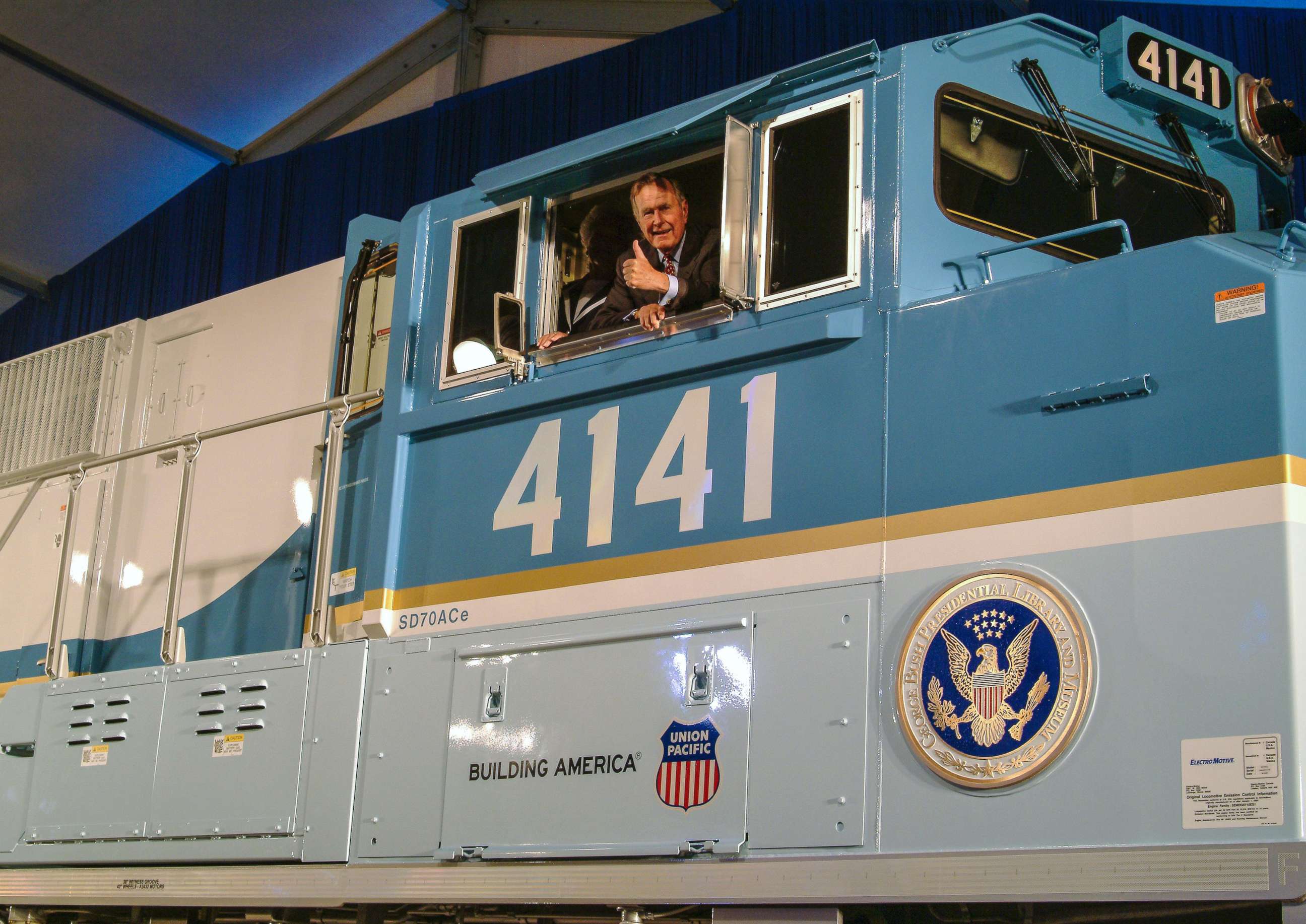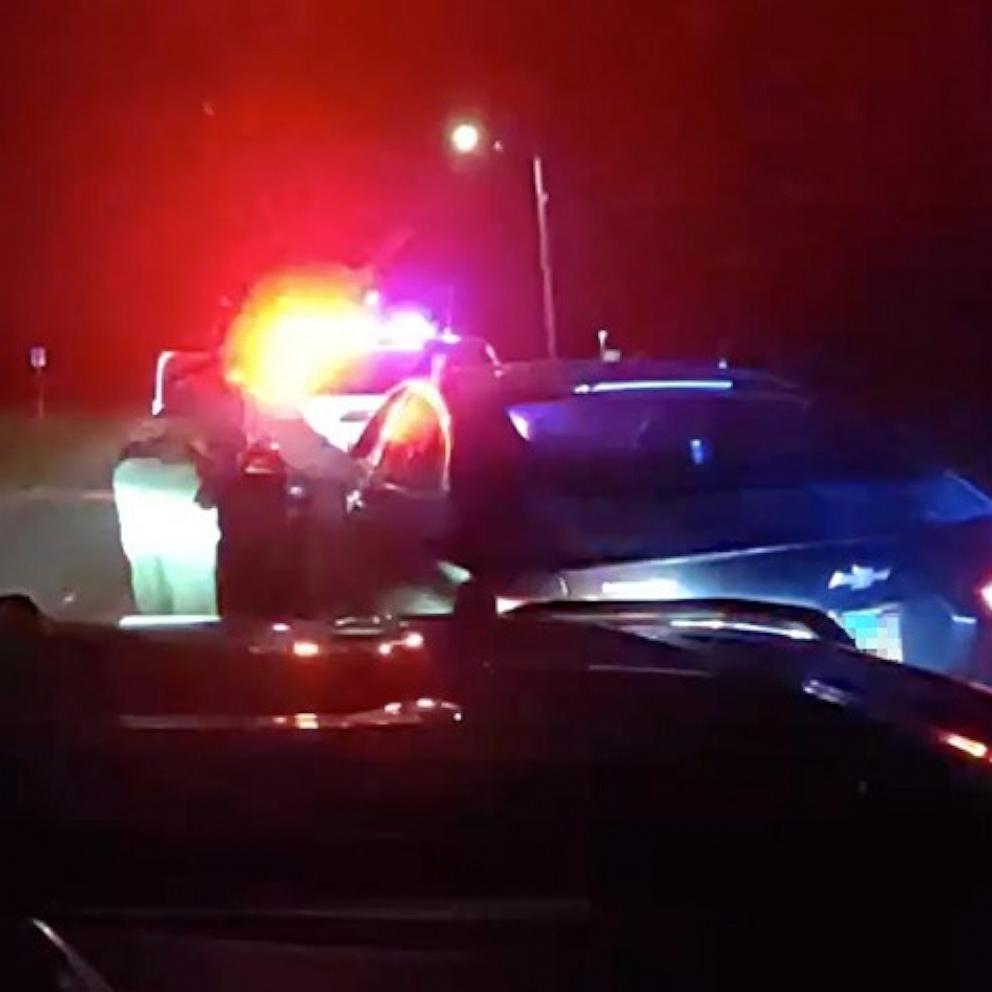Navy veterans crew George H.W. Bush's historic presidential funeral train
Thousands of mourners stood by railroad tracks in Texas Thursday to honor President George H.W. Bush as his funeral train carried his casket to his final resting place.
Arrangements for his presidential funeral train took years of complicated planning, but one detail worked out just the way President George H.W. Bush would have wanted: the engineer and conductor are two veterans who served in the Navy just as he did.
June Nobles, the train’s engineer, served nine years in the U.S. Navy. She’s worked for Union Pacific for 15 years. Randy Kuhanek, the train’s conductor, served eight years in the Navy and has worked at Union Pacific for 23 years.
Bush became the youngest pilot in the Navy's history when he joined in 1942 and then almost lost his life when his plane was shot down by the Japanese. He was rescued by an American submarine in a stroke of luck that changed the course of his life.

Together, Nobles and Kuhanek are taking Union Pacific No. 4141, an engine painted to look like Air Force One in honor of the 41st president, some 70 miles through Texas from his funeral at St. Martin’s Episcopal Church in Houston to his burial site at Texas A&M University, home to Bush's presidential library and museum.
Union Pacific hand-picked Nobles and Kuhanek, said company spokesman Tom Lange. "Part of it is their knowledge of the route, you have to be familiar with the territory. And both are retired Navy," Lange said.
The train will slow down when it passes through towns so mourners along the tracks can pay their respects. The car carrying the president's remains was outfitted with transparent Plexiglass, according to Union Pacific, so people can see the flag-draped casket.
The presidential funeral train ride will be the first in almost 50 years, when a train carried President Dwight D. Eisenhower’s remains from Washington to his home state of Kansas.

Dating back to President Abraham Lincoln, the presidential funeral train was a more common practice in the era before planes and interstate highways, according to the Smithsonian, as a very visible symbol for mourners.
For Bush, the presidential train arose from a friendship with the Dick Davidson, the CEO of Union Pacific, and a “great love for trains,” said Lange. It was first unveiled in 2005 for a transportation exhibit at his presidential library.

“He really had a love of trains and he was so friendly and personable with everyone,” said Lange, describing times when he rode on Union Pacific trains for other reasons.
Several years later, Union Pacific was asked if a presidential funeral train ride could be arranged, Lange said. Company officials began nailing down the details almost 10 years ago.
“It’s a great honor and privilege for us to play some small part in recognizing Bush and giving people a chance to pay their last respects in a way that’s unique to him,” Lange said.
Bush will be buried next to Barbara, his wife of more than seven decades, and his daughter Robin, who died at age 3 of leukemia.





